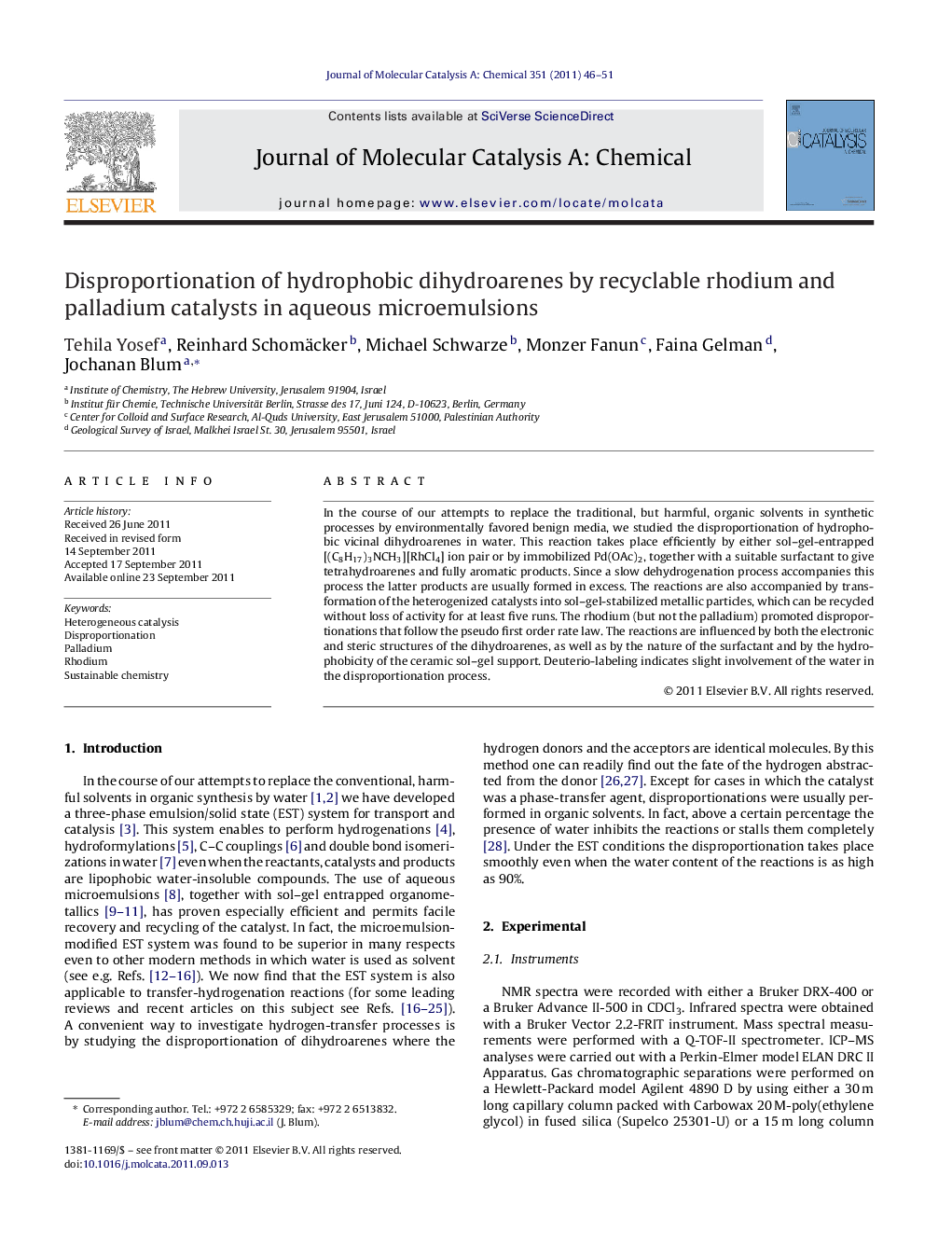| Article ID | Journal | Published Year | Pages | File Type |
|---|---|---|---|---|
| 66386 | Journal of Molecular Catalysis A: Chemical | 2011 | 6 Pages |
In the course of our attempts to replace the traditional, but harmful, organic solvents in synthetic processes by environmentally favored benign media, we studied the disproportionation of hydrophobic vicinal dihydroarenes in water. This reaction takes place efficiently by either sol–gel-entrapped [(C8H17)3NCH3][RhCl4] ion pair or by immobilized Pd(OAc)2, together with a suitable surfactant to give tetrahydroarenes and fully aromatic products. Since a slow dehydrogenation process accompanies this process the latter products are usually formed in excess. The reactions are also accompanied by transformation of the heterogenized catalysts into sol–gel-stabilized metallic particles, which can be recycled without loss of activity for at least five runs. The rhodium (but not the palladium) promoted disproportionations that follow the pseudo first order rate law. The reactions are influenced by both the electronic and steric structures of the dihydroarenes, as well as by the nature of the surfactant and by the hydrophobicity of the ceramic sol–gel support. Deuterio-labeling indicates slight involvement of the water in the disproportionation process.
Graphical abstractDisproportionation of water insoluble 1,2-dihydronaphthalene derivatives takes place by either RhCl3–Aliquat® 336 entrapped in octylated sol–gel or by Pd(OAc)2 within a similar support. During the catalytic process the pre-catalysts are converted into recyclable supported nanoparticles.Figure optionsDownload full-size imageDownload high-quality image (152 K)Download as PowerPoint slideHighlights► Replacement of organic solvents by aqueous microemulsions. ► Disproportionation of water insoluble substrates in aqueous media. ► Recylcing of the catalyst as supported active metallic nanoparticles.
